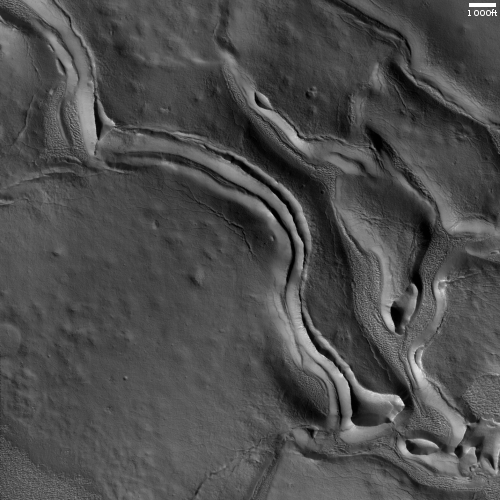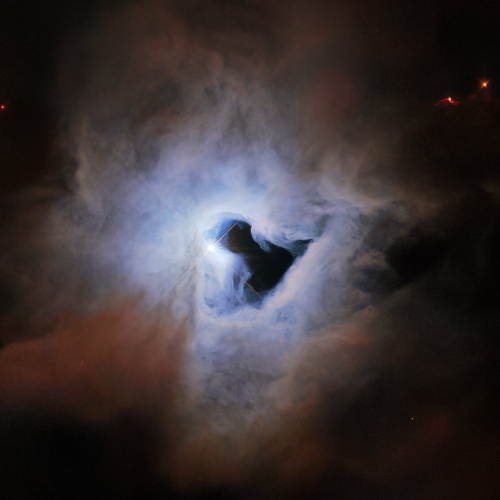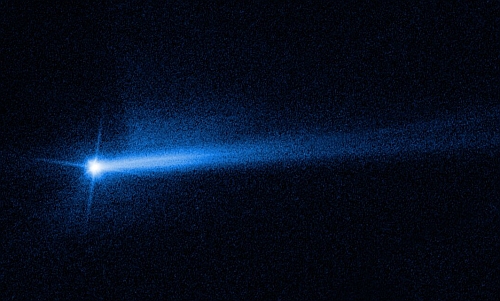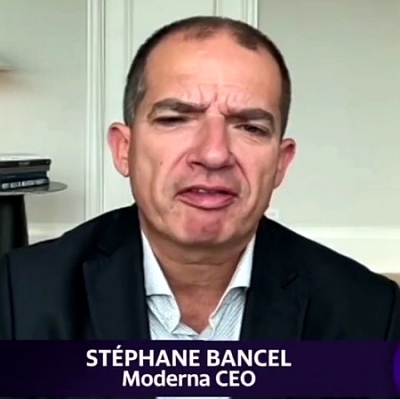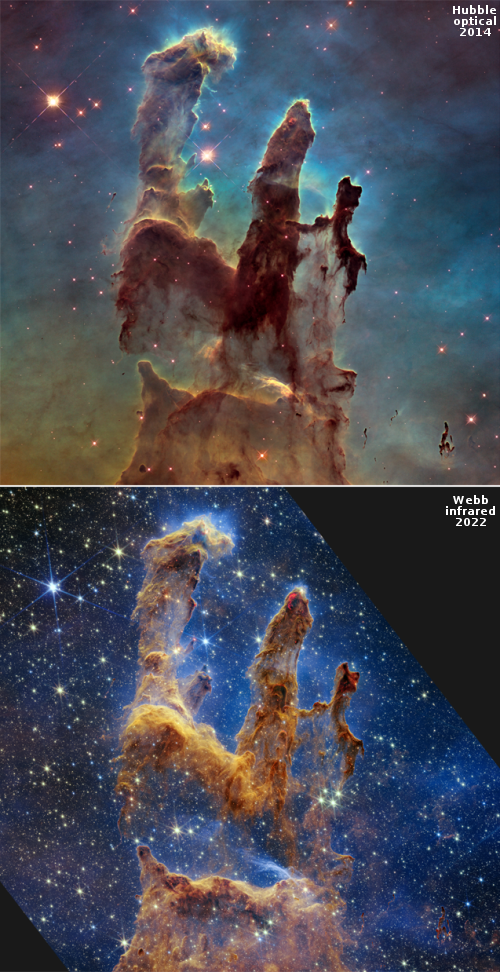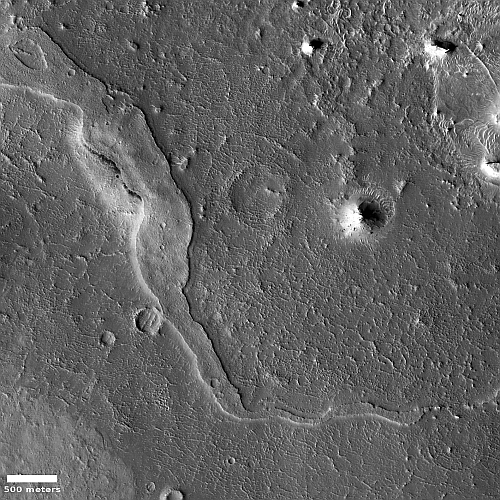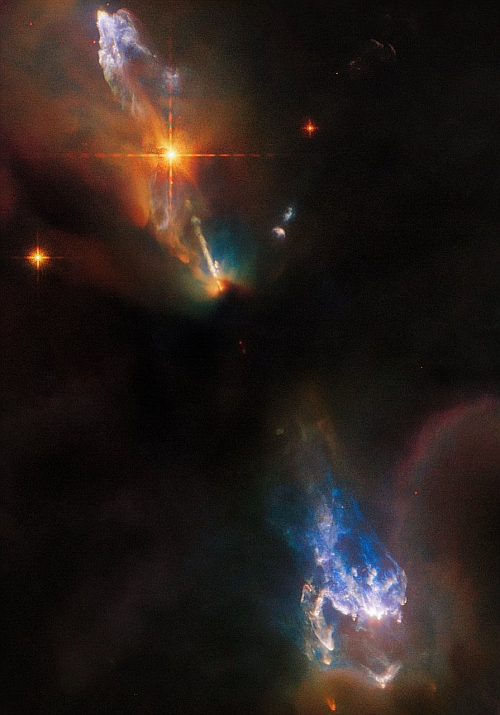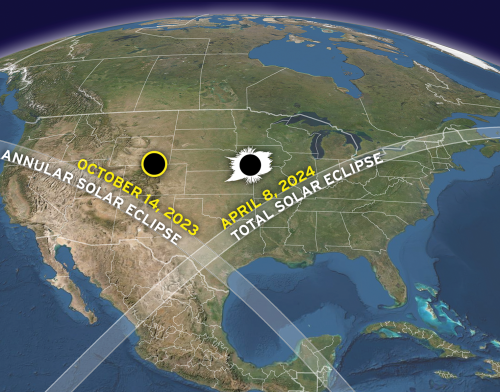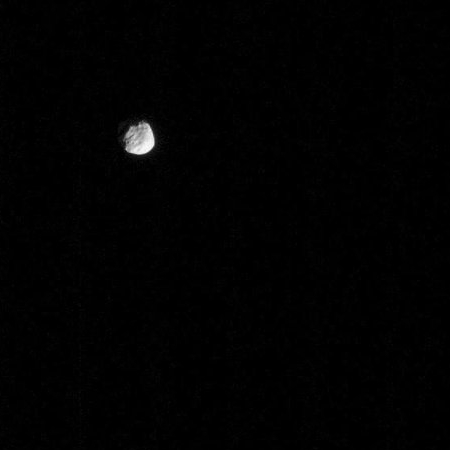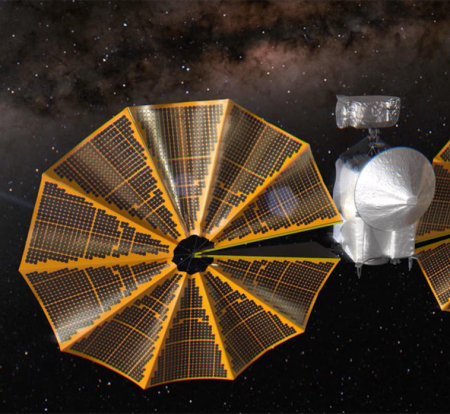A glacier sea on Mars
Cool image time! The photo to the right, rotated, cropped, and reduced to post here, should at first glance be one of my “What the heck!?” images. However, a little detective work quickly provides us some understanding of the inexplicable geology seen at this particular location on Mars.
The picture was taken on August 29, 2022 by the high resolution camera on Mars Reconnaissance Orbiter (MRO) and was labeled by the science team a “Lobate Debris Apron in Deuteronilus Mensae.” This mensae region is the western part of the 2,000-mile-long strip in the northern mid-latitudes of Mars that I label glacier country, since almost every high resolution picture taken in this strip shows extensive glacial features.
This picture is no different, showing what appears to be glaciers, but by itself it is still difficult to make sense of it. Glaciers flow downhill, like rivers. In this high resolution image the direction of flow is somewhat unclear.
As always, a wider view clarifies the picture.
» Read more
Cool image time! The photo to the right, rotated, cropped, and reduced to post here, should at first glance be one of my “What the heck!?” images. However, a little detective work quickly provides us some understanding of the inexplicable geology seen at this particular location on Mars.
The picture was taken on August 29, 2022 by the high resolution camera on Mars Reconnaissance Orbiter (MRO) and was labeled by the science team a “Lobate Debris Apron in Deuteronilus Mensae.” This mensae region is the western part of the 2,000-mile-long strip in the northern mid-latitudes of Mars that I label glacier country, since almost every high resolution picture taken in this strip shows extensive glacial features.
This picture is no different, showing what appears to be glaciers, but by itself it is still difficult to make sense of it. Glaciers flow downhill, like rivers. In this high resolution image the direction of flow is somewhat unclear.
As always, a wider view clarifies the picture.
» Read more

